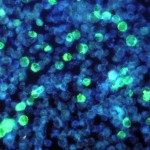Link to Pubmed [PMID] – 25456160
Link to DOI – 10.1016/j.immuni.2014.10.007S1074-7613(14)00383-5
Immunity 2014 Nov; 41(5): 776-88
Interleukin-22 (IL-22) plays a critical role in mucosal defense, although the molecular mechanisms that ensure IL-22 tissue distribution remain poorly understood. We show that the CXCL16-CXCR6 chemokine-chemokine receptor axis regulated group 3 innate lymphoid cell (ILC3) diversity and function. CXCL16 was constitutively expressed by CX3CR1(+) intestinal dendritic cells (DCs) and coexpressed with IL-23 after Citrobacter rodentium infection. Intestinal ILC3s expressed CXCR6 and its ablation generated a selective loss of the NKp46(+) ILC3 subset, a depletion of intestinal IL-22, and the inability to control C. rodentium infection. CD4(+) ILC3s were unaffected by CXCR6 deficiency and remained clustered within lymphoid follicles. In contrast, the lamina propria of Cxcr6(-/-) mice was devoid of ILC3s. The loss of ILC3-dependent IL-22 epithelial stimulation reduced antimicrobial peptide expression that explained the sensitivity of Cxcr6(-/-) mice to C. rodentium. Our results delineate a critical CXCL16-CXCR6 crosstalk that coordinates the intestinal topography of IL-22 secretion required for mucosal defense.




